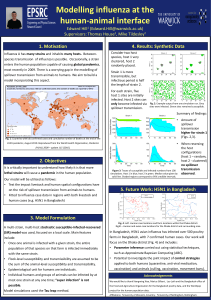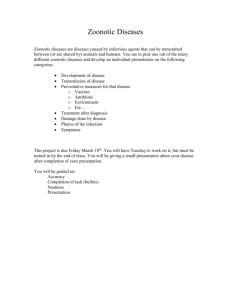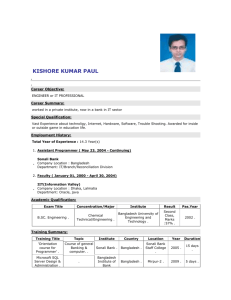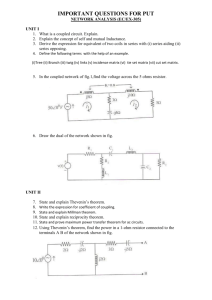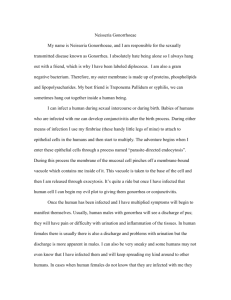Mathematical modelling of zoonotic influenza A applied to Bangladesh 1. The Problem
advertisement
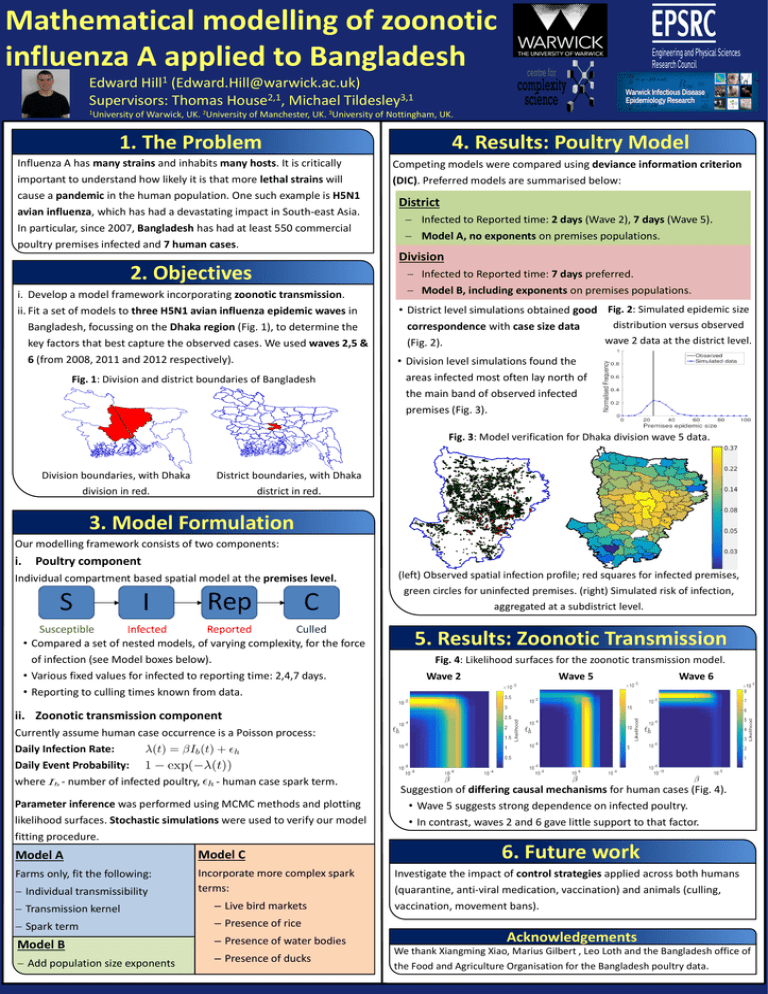
Mathematical modelling of zoonotic influenza A applied to Bangladesh Edward Hill1 (Edward.Hill@warwick.ac.uk) Supervisors: Thomas House2,1, Michael Tildesley3,1 1University of Warwick, UK. 2University of Manchester, UK. 3University of Nottingham, UK. 1. The Problem 4. Results: Poultry Model Influenza A has many strains and inhabits many hosts. It is critically important to understand how likely it is that more lethal strains will cause a pandemic in the human population. One such example is H5N1 avian influenza, which has had a devastating impact in South-east Asia. In particular, since 2007, Bangladesh has had at least 550 commercial poultry premises infected and 7 human cases. Competing models were compared using deviance information criterion (DIC). Preferred models are summarised below: District Infected to Reported time: 2 days (Wave 2), 7 days (Wave 5). Model A, no exponents on premises populations. Division 2. Objectives i. Develop a model framework incorporating zoonotic transmission. ii. Fit a set of models to three H5N1 avian influenza epidemic waves in Bangladesh, focussing on the Dhaka region (Fig. 1), to determine the key factors that best capture the observed cases. We used waves 2,5 & 6 (from 2008, 2011 and 2012 respectively). Fig. 1: Division and district boundaries of Bangladesh Infected to Reported time: 7 days preferred. Model B, including exponents on premises populations. • District level simulations obtained good Fig. 2: Simulated epidemic size distribution versus observed correspondence with case size data wave 2 data at the district level. (Fig. 2). • Division level simulations found the areas infected most often lay north of the main band of observed infected premises (Fig. 3). Fig. 3: Model verification for Dhaka division wave 5 data. Division boundaries, with Dhaka District boundaries, with Dhaka division in red. district in red. 3. Model Formulation Our modelling framework consists of two components: i. Poultry component Individual compartment based spatial model at the premises level. (left) Observed spatial infection profile; red squares for infected premises, green circles for uninfected premises. (right) Simulated risk of infection, aggregated at a subdistrict level. Susceptible Infected Reported Culled • Compared a set of nested models, of varying complexity, for the force of infection (see Model boxes below). • Various fixed values for infected to reporting time: 2,4,7 days. • Reporting to culling times known from data. 5. Results: Zoonotic Transmission Fig. 4: Likelihood surfaces for the zoonotic transmission model. Wave 2 Wave 5 Wave 6 ii. Zoonotic transmission component Currently assume human case occurrence is a Poisson process: Daily Infection Rate: Daily Event Probability: where - number of infected poultry, - human case spark term. Parameter inference was performed using MCMC methods and plotting likelihood surfaces. Stochastic simulations were used to verify our model fitting procedure. Model A Model C Farms only, fit the following: Incorporate more complex spark terms: Individual transmissibility Transmission kernel – Live bird markets Spark term – Presence of rice Model B – Presence of water bodies Add population size exponents – Presence of ducks Suggestion of differing causal mechanisms for human cases (Fig. 4). • Wave 5 suggests strong dependence on infected poultry. • In contrast, waves 2 and 6 gave little support to that factor. 6. Future work Investigate the impact of control strategies applied across both humans (quarantine, anti-viral medication, vaccination) and animals (culling, vaccination, movement bans). Acknowledgements We thank Xiangming Xiao, Marius Gilbert , Leo Loth and the Bangladesh office of the Food and Agriculture Organisation for the Bangladesh poultry data.
